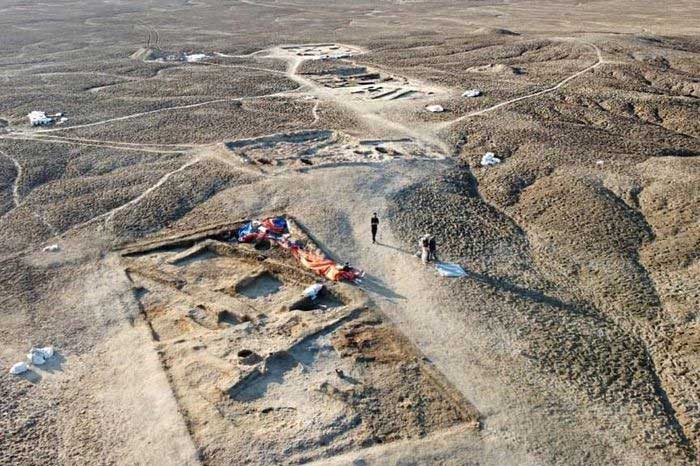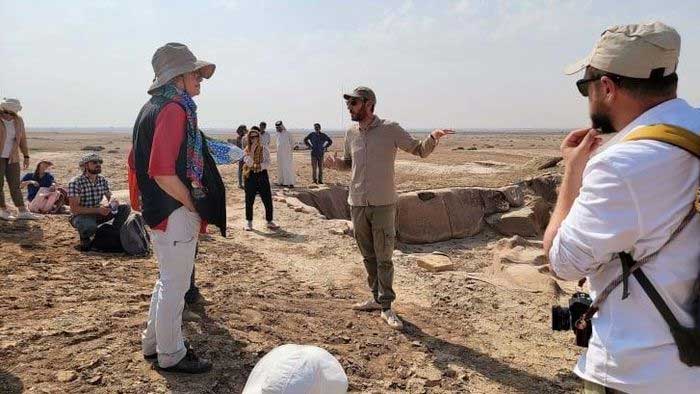A team of archaeologists has discovered an ancient tavern dating back to around 2,700 BC in the city of Lagash, Iraq, hidden beneath just 48 centimeters of soil.

Archaeologists have recently uncovered a tavern that existed 5,000 years ago. (Image: Lagash Archaeological Project).
The archaeologists reported that the newly discovered tavern features an outdoor dining area and a room equipped with benches, a baking oven, numerous remnants of ancient food, and a 5,000-year-old “refrigerator,” according to CNN.
Reed Goodman, an archaeologist from the University of Pennsylvania, stated that initially they only saw a large courtyard that was difficult to excavate. Upon returning at the end of 2022, the team discovered what appeared to be an oven, an ancient “refrigerator,” dozens of conical bowls, and many bowls containing fish bones. The team believes this area served as the outdoor dining section of the ancient tavern.
The tavern was discovered in Lagash (now the town of al-Hiba), one of the largest and oldest cities in ancient Southern Mesopotamia. This site is also a well-known archaeological location.

Researchers present at Lagash, Iraq. (Image: Lagash Archaeological Project).
Holly Pittman, Director of the Lagash Archaeological Project, mentioned that previously, much of the archaeological work focused on understanding religious architecture and elite classes. However, she is now concentrating on residential areas in recent excavations to gain a broader understanding of ancient cities.
The discovery of the tavern supports her team’s viewpoint that ancient societies included a middle class, in addition to elites and slaves.
“Right here, there is something that provides us with a more colorful history of the city,” Pittman stated.
In recent years, researchers have applied modern technology to the excavation process, such as drone photography and sediment analysis. They have also studied sediment samples at a depth of 25 meters to better understand the geological development of Lagash.


















































